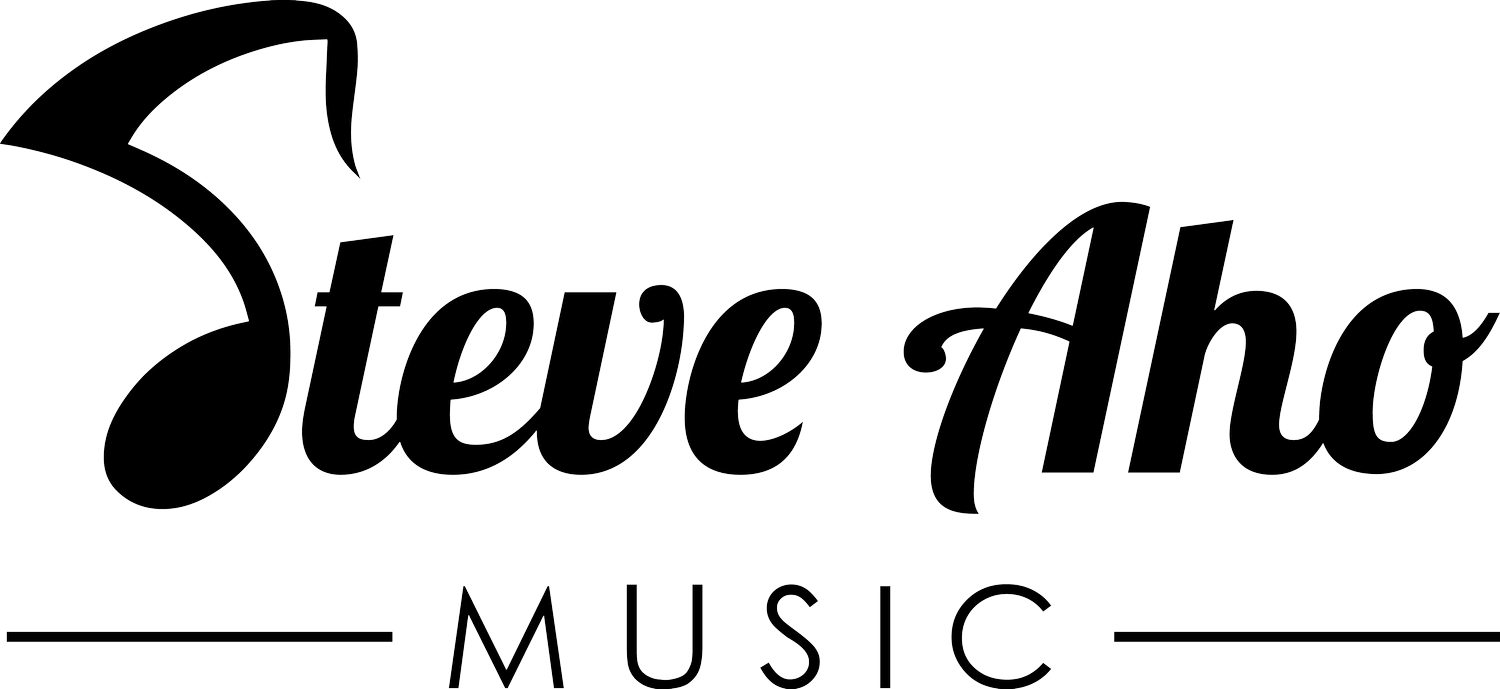Tips for Accurate Piano Transcription
Published October 9, 2022I transcribe a lot of piano music for my work. Since the instrument has the potential for great polyphonic complexity, i.e., so many notes at the same time across a pretty broad register, transcribing piano can seem quite intimidating. But it is truly not as hard as it might appear! I hope to demystify the process a bit with the following tips:
Use a DAW for playback while transcribing (I use Reaper). Attempting to transcribe from a streaming source like Spotify, YouTube etc. wastes a huge amount of time because the transport controls are so clumsy. The same goes obviously for using a CD, tape or vinyl (if anybody even still does that). Your DAW should be set up with some efficient keyboard shortcuts for moving around quickly through the source material.
Tempo-map the source material. I talk about this a lot in my other blog posts. Knowing exactly when the notes happen is just as important as what pitch they are. You will also find that transcribing is much easier when you have groups of notes organized into bars and beats. In fact, I even go so far as to create tempo maps for music that is in “free” time. (From my experience, the majority of “free” improvisations still have some kind of logical temporal grouping). Of course, on the notation side, it may make sense to later hide the meter and barlines when expressing free passages as notation.
Work in small chunks. This could be one bar, two bars, or even one beat, depending on the complexity and tempo of the material. Transcribe what is being played in each chunk and then move on to the next. No need to waste time and mental energy trying to quasi-memorize and notate passages that are too long.
Don’t “fish” for notes on your keyboard. Instead, just listen to the musical passage as many times as needed until you know exactly what it is. Form a clear picture in your mind of what is being played, then simply input the notes. Doing this may be very hard at first and may seem like it would take too long, but be patient and stick with it. Eventually, you will be able to transcribe faster and more accurately with this method, putting down precisely the correct notes on the first try. Note: complex hand-to-hand passages may still require a bit of experimentation to figure out the best way to play / notate them, but this doesn’t mean fishing for notes, but rather determining which hand / fingers are being used.
In many cases, it can be helpful to focus on each hand separately. When using this approach, I often transcribe the left hand first, because, among other things, this frequently gives clues about what the harmonic structure is. Note that this approach is not very effective when the pianist is playing passages between the hands that would be notated in cross-staff notation. In these cases, I try instead to just visualize what they might be doing and then just transcribe both hands simultaneously.
Play, then stop playback quickly to hear what makes up dense chords. Despite having a pretty decent ear, I sometimes get tripped up by extremely dense chords, especially if there is a lot of sustain pedal and/or sympathetic resonance. I find it frequently helps to just play the tough passage for a split second and then immediately stop it, allowing my mind to then use a few seconds of silence to mentally process what it just heard. It is a bit hard to describe how and why this works, but after a few repetitions, I can usually discern each and every note that I have heard.
Imagine the notes you think might be there. This is another trick to help figure out a super complex chord, especially chords with tight clusters of adjacent pitches. If you are unsure if a certain note is contained in the chord, “sing” the sound of this specific pitch in your mind while you play back the example. If it truly is there, you should be able to make it out quite clearly during playback. And if it is not there, you will clearly notice its absence.
Create a MIDI mockup of your transcription and check it against the source material. Typically, my clients want to have a MIDI mockup anyway. So making one not only helps me to make a better transcription, it gives the client a tangible, listenable asset in addition to the PDF sheet music I provide. I often play back my completed transcription on top of the source martial (on a separate track, using a virtual instrument), a proofing process that makes any errors blatantly obvious.
Finally, remember that transcribing music is part hearing, part deduction. As much as having a good ear is vital to being a good transcriber, aural skills are not all you need. Sometimes what you think you hear just isn’t what’s actually being played. You have to consider what is physically possible to play on the instrument and the likelihood of a certain thing even being played. If something you transcribe is technically impossible (or incredibly awkward) to play, it may be that you are just hearing it wrong. For example, there might be a strange overtone that is tricking you, or some other auditory artifact in the recording that is influencing what you think you hear. Hearing + deduction = good transcription.
I hope these tips are helpful for all the transcribers out there!
Steve
